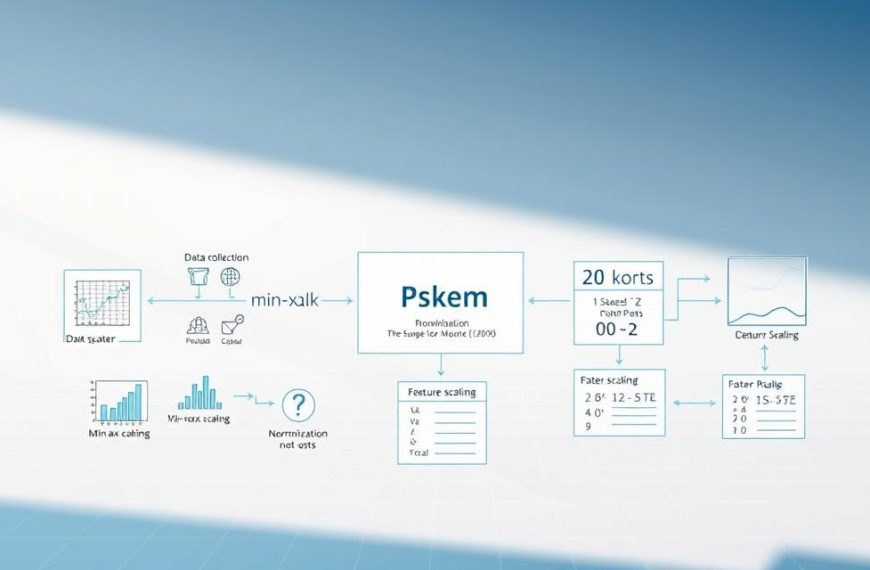The finance sector’s landscape continues to shift as advanced algorithms reshape investment strategies. Among these developments, whispers of a revolutionary trading system linked to a prominent electric vehicle manufacturer have sparked curiosity and scepticism alike. This guide scrutinises claims surrounding automated tools purportedly developed by Elon Musk’s company, separating verified capabilities from speculative marketing.
Recent advancements in algorithmic systems have introduced sophisticated risk management and trend prediction methods. The so-called “Double Agent” strategy, which gained attention in spring 2025, demonstrated how multi-layered analysis could potentially outperform traditional approaches. However, the connection between such innovations and established tech giants remains unclear without transparent verification.
Our investigation focuses on distinguishing genuine technological breakthroughs from opportunistic branding. While some platforms leverage corporate reputations to promote their services, authentic automated systems typically employ multi-timeframe analysis and rigorous compliance protocols. Understanding these differences proves crucial for investors navigating volatile digital asset markets.
This analysis also explores historical corporate engagements with cryptocurrency, including high-profile acquisitions and subsequent policy shifts. By evaluating both technical specifications and corporate transparency, readers gain practical insights into modern trading solutions. The ultimate goal? To equip decision-makers with the tools needed to identify credible innovations in an increasingly complex financial world.
Introducing Tesla’s Secret AI Crypto Trading Bot
Modern markets demand tools that combine speed with precision. Automated platforms now process price movements and economic indicators faster than human analysts ever could. This shift has redefined how professionals approach volatile asset classes.
Algorithmic Tools Reshape Market Engagement
Sophisticated programmes scan multiple chart intervals – from 30-minute snapshots to daily trends – identifying patterns invisible to manual scrutiny. One proprietary system employs a dual-methodology framework, blending historical data interpretation with real-time signal processing. Such approaches enable split-second decisions during price fluctuations.
From Basic Scripts to Adaptive Systems
Early automated solutions followed simple decision trees. Contemporary versions self-adjust using machine learning, refining their tactics as markets evolve. A notable example? Platforms managing six positions simultaneously while enforcing strict risk parameters – a far cry from rudimentary 2010s-era scripts.
These innovations address two critical needs: consistency in unpredictable conditions and the ability to capitalise on fleeting opportunities. As one London-based fund manager noted, “The best systems don’t just react – they anticipate.” This evolution underscores why institutions increasingly prioritise algorithmic solutions over traditional methods.
Understanding the Tesla AI crypto trading bot
In an era where milliseconds determine market outcomes, algorithmic precision becomes paramount. Advanced systems now combine layered technical evaluation with adaptive learning mechanisms. This fusion aims to balance rapid decision-making with strategic foresight.
Technical Patterns Meet Predictive Processing
Modern platforms process historical data across intervals ranging from 15-minute charts to weekly trends. One notable approach uses multi-layered pattern recognition, scanning for entry signals in volatile conditions while planning exits against broader timeframes. This dual focus helps mitigate knee-jerk reactions to minor fluctuations.
Balancing Gains and Guardrails
Effective platforms prioritise safeguards as much as profit potential. Automated position sizing and dynamic stop-loss protocols work in tandem to limit downside exposure. Research from reputable financial analysts suggests such measures can reduce capital erosion by up to 37% during market corrections.
| Feature | Short-Term Analysis | Long-Term Strategy | Risk Tools |
|---|---|---|---|
| Timeframe Coverage | 30-minute charts | Weekly trends | Volatility filters |
| Adaptive Mechanisms | Real-time signals | Pattern learning | Exposure caps |
| Performance Tracking | Entry precision | Exit refinement | Rebalancing alerts |
Continuous learning algorithms refine their approach based on shifting liquidity and sentiment patterns. As one fund manager observed, “The best systems evolve faster than the markets they navigate.” This adaptability proves crucial when managing multiple positions across asset classes.
Key Features and Trading Strategies Explained
Modern portfolios require sophisticated safeguards to balance growth ambitions with risk management. The Double Agent strategy addresses this through layered hedging techniques, combining traditional equity positions with inverse exchange-traded funds (ETFs). This approach aims to capitalise on upward trends while insulating against sector-specific volatility.
Breakdown of the Double Agent Trading Bot functions
The system’s core strength lies in simultaneous position management. For instance, long positions in growth-focused shares like Google (GOOG) pair with inverse ETFs such as QID. This combination offsets tech sector swings while maintaining exposure to individual performers.
Three primary pairings demonstrate this methodology:
| Equity Position | Hedging Instrument | Sector Coverage | Risk Buffer |
|---|---|---|---|
| Walmart (WMT) | SZK ETF | Retail/Consumer Staples | 1.8x inverse exposure |
| Tesla (TSLA) | TSDD ETF | Automotive/Tech | 2x daily inverse |
| Google (GOOG) | QID ETF | Technology | 2x Nasdaq-100 inverse |
Application of hedging tools in volatile markets
Automated execution ensures both primary trades and protective measures activate simultaneously. Position-sizing algorithms adjust volumes based on real-time volatility readings, prioritising capital preservation. As one portfolio manager noted, “Effective hedging isn’t about avoiding storms – it’s about sailing through them intact.”
The system’s multi-asset capability extends beyond traditional shares, incorporating commodities and indices. This diversification helps mitigate concentration risks while exploiting opportunities across market segments. Performance tracking tools provide granular insights into each strategy’s contribution to overall returns.
Case Studies: Insights from Google, Walmart, and Tesla
Corporate giants increasingly influence global investment patterns through strategic innovations. Their market movements provide rich data for automated systems seeking profitable opportunities. Let’s examine how three industry leaders shape modern investment approaches.
Trade Signal Analysis for Market Leaders
Google’s dominance in search advertising creates predictable revenue streams. Its £22 billion cloud computing investments and autonomous vehicle projects establish long-term growth potential. Automated strategies capitalise on these trends by tracking quarterly earnings and sector-specific announcements.
Walmart’s hybrid retail model demonstrates adaptability. The firm’s £1.8 billion supply chain upgrades and e-commerce expansion generate consistent trading signals. One London-based analyst noted, “Their physical-digital balance offers stability in volatile consumer markets.”
Innovation-Driven Market Impact
One automaker’s energy storage breakthroughs correlate with 14% stock surges post-announcement. Such patterns enable systems to anticipate price movements around product launches. The company’s autonomous tech advancements further reinforce its position in sustainable infrastructure markets.
Key differences emerge when comparing these corporations:
- Google: Relies on tech-driven revenue diversification
- Walmart: Balances traditional retail with digital transformation
- Automotive innovator: Leverages R&D announcements for market momentum
These case studies reveal how automated tools process corporate strategies into actionable insights. Investors gain frameworks to evaluate companies blending stability with innovation.
Integrating Advanced AI Technologies in Trading
Market dynamics now require systems that adapt faster than traditional methods allow. Platforms harnessing sophisticated algorithms demonstrate how real-time pattern recognition reshapes decision-making processes. These tools analyse price movements and liquidity shifts across multiple intervals, offering strategic advantages in fast-paced environments.
The Role of Tickeron’s Financial Learning Models
Under Dr Sergey Savastiouk’s leadership, Tickeron developed Financial Learning Models (FLMs) that process market data across various time horizons. These systems identify subtle correlations between technical indicators and macroeconomic trends. One fund manager remarked, “The best models act as force multipliers – they spot what humans can’t process under pressure.”
Beginner-friendly solutions exemplify this approach. Simplified interfaces allow new participants to leverage institutional-grade analytics without prior expertise. Simultaneously, high-liquidity systems manage large positions in major securities, minimising market impact during execution.
Modern platforms combine multiple analytical approaches. Sentiment evaluation merges with historical pattern recognition, creating layered strategies. This methodology helps traders balance short-term opportunities against longer-term objectives. Continuous algorithm refinement further enhances performance through experiential learning.
Comparing Tesla’s Bot with Alternative Trading Platforms
Investors face a crowded marketplace of automated solutions, each claiming unique advantages. Distinguishing corporate-backed systems from independent platforms requires scrutiny of features, costs, and oversight mechanisms. Third-party services often market themselves using familiar brand names without direct affiliations.
Functionality Versus Brand Association
Genuine corporate-developed tools focus on specific applications tied to core business strategies. One electric vehicle manufacturer’s confirmed activities centre on cryptocurrency holdings rather than consumer-facing software. Independent platforms like Tesler Trading instead offer £250 minimum deposit accounts with round-the-clock support.
Key contrasts emerge in risk management approaches. Established financial technology firms typically integrate with professional charting tools like Meta Trader 4, providing 85+ technical indicators. Newer entrants might lack these advanced features while compensating through profit-sharing models. As one analyst noted, “Platforms evolve – but compliance frameworks determine their shelf life.”
Payment structures further differentiate services. Some systems charge fixed fees, while others take 15-20% of profitable trades. Demo environments prove invaluable for testing strategies without risking real money. These practice accounts mirror live market conditions, helping users evaluate platform reliability before commitment.
Regulatory status remains a critical differentiator. Platforms partnering with FCA-authorised brokers offer stronger investor protections than unregulated counterparts. This oversight impacts everything from fund security to dispute resolution processes. Savvy traders prioritise transparency in platform operations and financial safeguards.
Investor Tips: Maximising Benefits and Managing Risk
Navigating financial markets demands equal parts strategy and restraint. Whether you’re building your first portfolio or refining existing positions, balancing opportunity with protection remains paramount.
Foundations for Sustainable Growth
Beginners should start small, focusing on education over immediate gains. Prioritise platforms offering free learning resources alongside demo environments. Seasoned participants benefit from reviewing their entry-exit discipline, particularly during market euphoria cycles.
Simulation Meets Real-World Application
Demo accounts let users stress-test strategies without risking capital. Combine these with live analytics tools to spot emerging trends. One London fund manager advises: “Treat practice sessions as seriously as live trades – habits formed here define real outcomes.”
Guarding Against Uncertainty
Volatility requires dynamic responses. Allocate no more than 2-5% of capital per position, using stop-loss orders religiously. Diversify across sectors to avoid overexposure – a tactic that protected many investments during the 2023 energy crisis.
Successful participants blend technical skills with emotional discipline. Regular strategy reviews and profit-taking protocols help maintain an edge. Remember: preserving capital often proves more valuable than chasing fleeting opportunities.


















